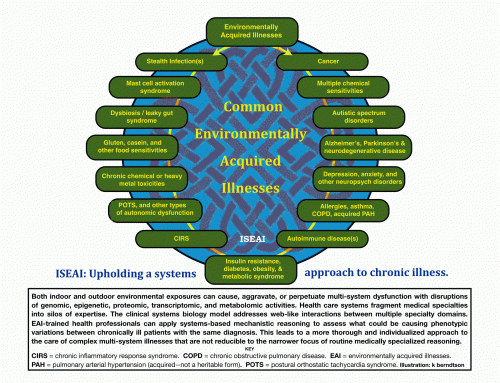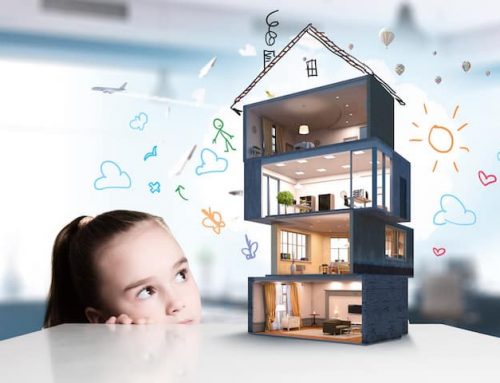This guide was created by a group of ISEAI’s IEP members. (PDF version)
When you or a loved one suffers from an Environmentally Acquired Illness (EAI), your home/workplace are often looked at as potential sources of exposure. Much of the focus of an assessment may be on molds/bacteria; however, there are other important environmental health concerns to consider. Evaluating allergens, chemical VOCs, mVOCs and EMF exposures may also have significance for an environmentally sensitized occupant.
What is an IEP?
An Indoor Environmental Professional (IEP) is an ‘umbrella’ term used in our industry to describe a professional in the field of indoor environmental assessment and is not a certification in and of itself. IEPs may have a very wide or very narrow scope of training and experience. Their role typically includes taking a detailed history and overview of the home or structure, noting past or present areas of moisture/floods/leaks/fires or other events the home has experienced, and the occupants’ health concerns. IEPs should then be able to formulate an assessment and testing strategy that will address the client’s concerns and evaluate the home/workplace as a whole. The level of assessment and certainly type and quantity of sampling can vary significantly from one client/building to another. A good IEP will take the time to explain their approach, including the collection (and potential value) of any samples.
An IEP should be independent of remediation contractors and have no financial incentive or conflict of interest in remediation or other contracting services. If, for some reason, the IEP is not independent (e.g. they work for the same remediation contractor), this should be clearly disclosed up front to minimize any conflicts.
Credentials
There are many mold and IAQ (Indoor Air Quality) ‘certifying’ organizations, but only a few are recognized for their high standards, integrity, continuing education requirements and support for their members. Among these are ACAC, NORMI, AIHA, CIH, and CSP. It is essential that an environmental assessment is performed by a knowledgeable, credentialed IEP who has experience working with clients suffering from an EAI in order to create a maximally effective solution.
In addition, please keep in mind that there are a handful of US states that require licensing in the mold industry, and they require separate licenses for mold assessors and mold remediation companies, to avoid conflicts of interest. By law, the licenses must be current with continuous education and insurance coverage. However, having any license and/or certification doesn’t guarantee competency in working with clients with EAI.
Also consider that some companies tout the owners’ or founders’ credentials but they may be more of a ‘figure-head’ and do not actually perform the assessments, write the reports or protocols. Ideally, you want the most experienced and the most credentialed inspector to perform the investigation.
Find out what credentials your specific site inspector carries.
The IEP and Your Site Investigation
Building science knowledge, experience, or even training is highly recommended. Understanding the building envelope, pathways of air, the forces moving air and moisture, moisture and contaminant transfer through materials, construction and basic plumbing principles may be key to finding sources of contamination. They should also understand how to evaluate an HVAC system for signs of moisture issues, mold/bacterial growth, poor drainage, oversizing or short-cycling, poorly-sealed ducting and other defects that can affect the indoor environmental health. Knowledge of concepts in ventilation and air pressurization for maintaining a healthy home, as well as various air filtration or purification processes is another plus.
Ask what knowledge they have in Building-Science and HVAC systems.
Some IEPs may be trained and certified in EMF (Electromagnetic Fields) evaluations in and around a structure, radon testing, lead/asbestos inspections etc. This may not be a usual role for an IEP who specializes (more) in microbial/mold contamination. You might need to find more than one specialist in order to evaluate these other potential concerns.
When addressing water damaged/damp buildings, experienced IEPs typically understand and have experience with the following disciplines:
- Understanding of EAI
- Detecting obvious and hidden moisture sources
- Identifying (via visual or historic evidence) past water intrusion events where otherwise dormant microbial growth exists
- Identifying cross-contamination concerns
- Understanding HVAC & Construction design/methods
- Understanding related building sciences
- Identifying potential building defect issues
- Understanding sample collection methods, limitations, and being able to explain the pros/cons of each to the client
- How to create and maintain a healthier indoor environment (e.g. moisture control, air cleaning, mechanical ventilation)
In general, an IEP’s investigation should include the following:
- Detailed history of the home/workplace
- Review documents from previous (and related) inspections/testing, or other documented history of past water leaks/damp conditions, remediation/cleaning efforts
- Thorough assessment based on visual observations, real-time measurements, and (where appropriate) sampling
- Written report with findings, interpretation of findings, and specific recommendations based on the interpretation and overall scope of work
- If remediation/cleaning efforts are recommended, they utilize industry standard documents (e.g. Institute of Inspection Cleaning and Restoration Certification-S520)
- Follow-up/monitoring services (where appropriate) to provide additional validation when the indoor exposures are suspected
There are many ‘triggers’ in an indoor environment that can have a profound impact on someone with EAI that are not usually considered by those inexperienced in this specialized field.
Ask what training they have had in these topics and if they are associated with ongoing continuing education and networks such as ISEAI.
Final Thoughts Regarding Samples Sent Off for Analysis
Ideally, the IEP interprets any samples collected and does not leave it to a 3rd party or laboratory for interpretation. In cases where the client requests further explanation of the laboratory results, the IEP may grant permission to allow the lab staff to speak with the client. It is important to note that oftentimes lab technicians do not have the same training and knowledge as the IEP; therefore, the explanation from any lab technician should be limited to information about the analysis, and not recommendations for next steps in the building.
Need a place to start searching for an IEP?
Consider visiting: directory.iseai.org
Thank you very much!
ISEAI Family







Leave A Comment